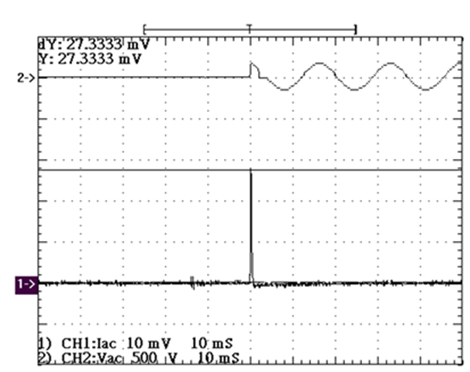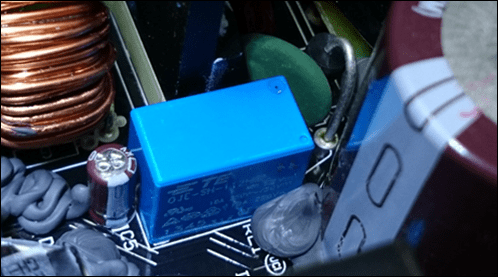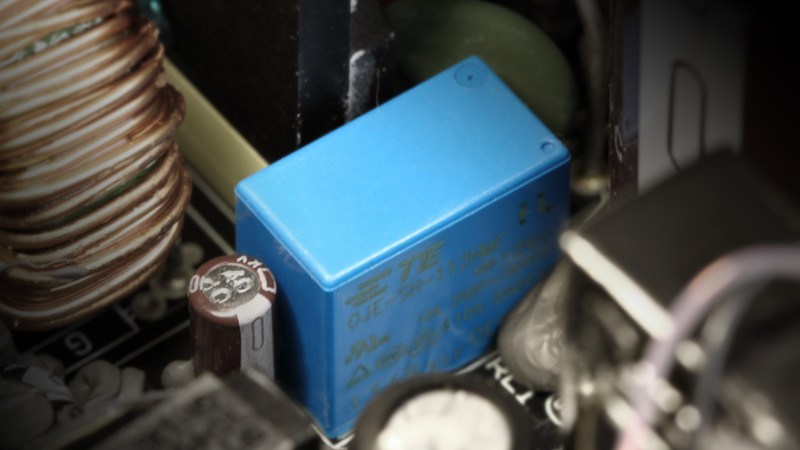The Importance of Inrush Current Limiting
To put it simply, inrush current is the rapid recharge of the primary-side filter capacitor in the electrical appliance by the AC input current during the instance power goes into an electrical appliance when it’s switched on. The peak current is usually much greater than steady currents, and so is named inrush current. Inrush currents will disappear after the filter capacitor is fully charged. The general waveform of inrush currents is as follows:

In order to prevent the components on the primary-side circuit from being damaged from inrush current impacts, power supplies are often designed with inrush current limiters, which generally use thermistors in series connection with filter capacitors (the circular green part seen in the image below), to absorb the sudden energy produced by inrush currents. When the primary-side capacitor is full charged, this thermistor will no longer serve a function.

A thermistor is still a resistor; after it limits the inrush current, it will become a power-consuming component in the circuit. In other articles, we mentioned gamers would prioritize in choosing high-efficiency power supplies. In order to improve the performance of power supplies, high-end power supplies would add in a relay (the blue component in the image above). The relay will serve to reduce the power consumption of the thermistor after it served its function.
In order to ensure every FSP product is free of quality issues caused by inrush currents, the Group requires testing of this item in every stage of the development period internally. A series of lifespan verifications will also be conducted after the initial mass production of the product, to ensure there would not be any potential quality issues on the market or in the hands of consumers.

